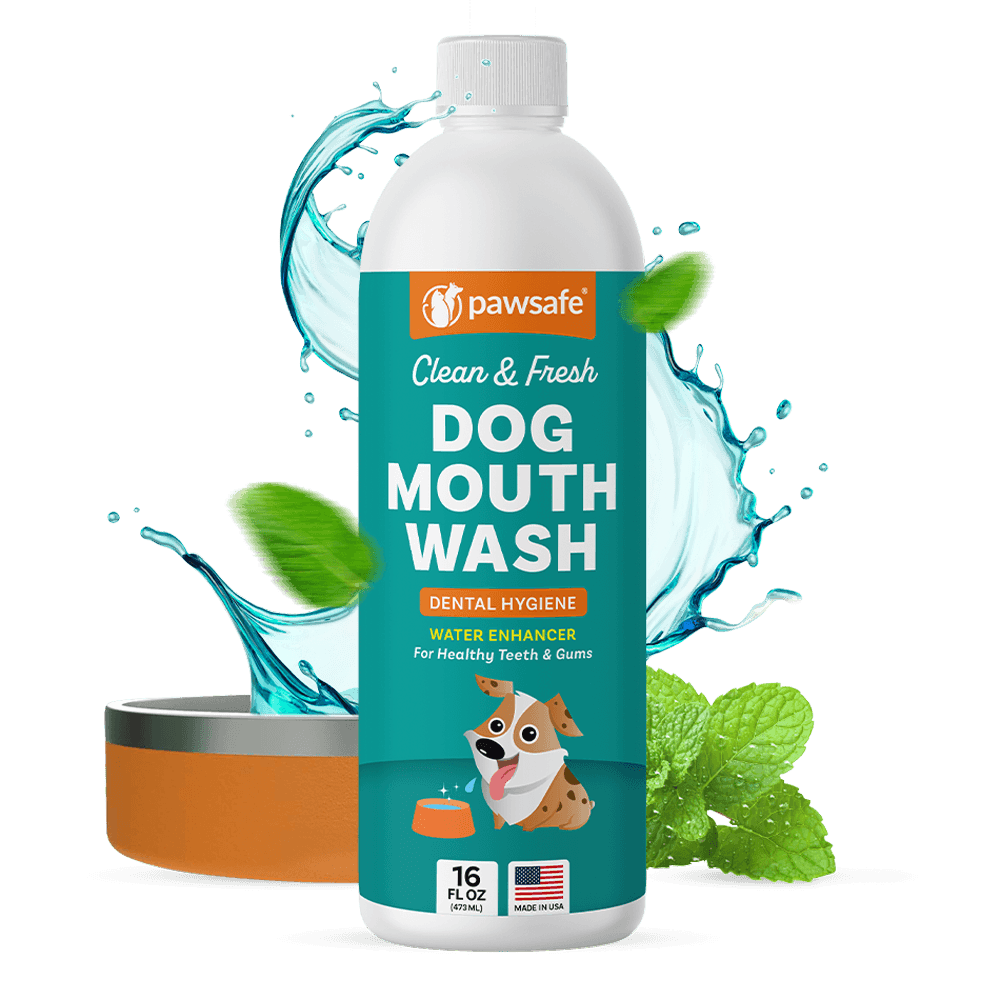
Ear wax is one of the first signs of a change in your dog’s ear health. Read on to find out what it means if your dog’s ear wax changes colors with our chart.
Part of responsible dog grooming and maintenance is keeping a close eye on what’s happening in our canine companion’s ears. It may not be pleasant to contemplate, but dog ear wax and discharge color are tell-tale signs of ear health. Whether it’s black gunk in our dog’s ears or excessive dark brown ear wax, we need to know what each color can tell us.
So let’s go through what each type of ear wax can tell you about your dog, and you can use our dog ear wax color chart to help guide you.
Table of Contents
Why Does Your Dog Need Earwax?
Healthy earwax or cerumen is an oily substance secreted by glands in the outer bit of a dog’s ear canal. It is water-resistant and antimicrobial, so it helps keep moisture and pathogens from getting further into the ear canal and forming an infection. As it is sticky, it also catches debris such as dust and dead skin cells, stopping it from getting too far into the ear.
A healthy ear should have minimal clear or pale wax and be clean and dry. A build-up of earwax and a significant color change is usually a sign of an ear infection (otitis). Otitis can be inflammation in the outer ear canal (otitis externa), the middle ear (otitis media), or the inner ear (otitis interna).
To keep the ear healthy and prevent ear infections, pet parents must clean their dog’s ears regularly to remove odors, wax, and debris from the ear, preventing ear infections.
In fact, dog ear infections are the third most common medical condition[1], with an average cost of $290 to treat. So this is an extremely common issue. One of the very first symptoms is discolored and excessive ear wax or even discharge. Understanding ear smells and odors can also help identify infections early. Other symptoms you may notice are:
- Redness around the ear canal and inner flap;
- The ear flap and ear canal should not have excessive hair and should be a healthy pink. Beware crust scabs, papules, or rash-type markings;
- Shaking head; and
- Or tilting the head to the side.
Ears are a vital part of canine communication, so it’s not just ear wax we should pay attention to. You can read more about what different dog ear positions mean in this article.

What Each Dog Ear Wax Color Means (With Chart)
When assessing your dog’s ear wax, it’s important to look at more than just the color. Look at
- Consistency: ear wax should be semi-soft and greasy to the touch. It should never be hard, crusty, oozing, or wet and moist.
- Quantity: your dogs should have just a little bit of visible ear wax that you can easily clean with ear wipes or flush out with a good ear flush. Excessive ear wax is a sign of a problem.
- Smell: No overt smell should come from your dog’s ear.
Transparent, Off White, To Light Yellow
They are likely fine if a dog’s ear wax is transparent, white, or light yellow. But if there is redness in the ears or signs of itchiness, it is probably an allergy. If the area is moist, particularly after swimming, dry it out to prevent water in the ear canal from causing an infection.
Brown Or Reddish Brown Ear Wax
A build-up of dark brown or reddish brown ear wax is a common symptom of yeast infections (candida or Malassezia spp.[2]). These often have a musty or very sweet smell. It is not an emergency, but your vet must prescribe specialized ear washes and treatments to get rid of it.
Dark brown wax may simply be a build-up of debris and healthy wax. It can be a sign that the ear needs a good clean in minimal amounts. Light amounts of brownish ear wax can simply be gently wiped away with safe dog ear wipes to prevent a build-up and to keep the area dry and clean.
Do not use products not made for dog ears, as they can disrupt the ear’s natural lipid barrier, PH, and microbiome and cause inflammation and infections.

Fresh Breath The Easy Way
Just add to the water bowl to support cleaner mouths and noticeably fresher breath without daily brushing struggles.
Shop Now 👉Fresh Breath Guarantee • 90-Day PawSafe® Promise
Light Tan or Pale Brown Ear Wax
Small amounts of tan or pale brown ear wax are signs of a healthy ear. But it can also mean some yeast in the ear, possibly bacteria. Remember, minor amounts of bacteria and fungi in the ears is normal; it is only when there is an overgrowth that it causes inflammation.
Pale Brown Ear Wax with Yellow Purulent Discharge (Pus)
Pale brown ear wax with a secondary, pus-like substance means the ear is infected. In this case, there is likely to be some yeast infection together with gram-positive bacteria such as Staphylococcus and gram-negative bacteria. There should also be a strong smell, swelling, and head shaking. Bacterial infections usually result in a rotten smell or a sickly sweet one.
Ear Wax with Yellow or Pale Green Discharge
A yellow or pale green color in your dog’s earwax is a sign of discharge and not just wax. This is likely mucus mixed with pus-like discharge from inflammation. It is often because of a type of bacteria called P. aeruginosa[3] in the middle or external ear canal. This is a challenging pathogen to treat, as it can be multi-drug resistant, and the discharge from the ear is typically oozing and smelling.
This is a severe infection that can lead to massive ear damage and even deafness.
Red or Bloody Discharge
Any signs of blood from the ear usually indicate something serious. It could be a burst abscess, punctured eardrum, or another internal injury. It can also be a sign of rare tumors.

Daily Water Additive For Oral Freshness
Helps maintain better breath and oral hygiene as your dog drinks, keeping cuddle moments pleasant.
Shop Now 👉Fresh Breath Guarantee • 90-Day PawSafe® Promise
Dark Brown or Black Ear Wax
If you notice a build-up of oily black gunk[4] or fluid around your dog’s ear, it may be tumors in the ear’s sweat glands. This is more common in cats than dogs, but it is something to be aware of.
More common are clusters or globs of very dark and waxy ear wax. It may look very similar to coffee grounds and is sometimes dark and crusty. This can be a sign of ear mites. Ear mites infest the external ear canal and need veterinary treatment as they are highly contagious.
Gray Ear Wax
The common yeast infection from Malassezia pachydermatis causes inflammation in the canal. There should be a brown or gray discharge build-up that is a little smelly. Dark gray and even black ear wax may also indicate an excess of dirt and debris that needs cleaning.
Final Word
Keeping your dog’s ear clean is vital to canine ear hygiene. Make sure to have a groomer or veterinarian show you how to do it effectively so as not to push ear wax further into the ear canal and create a blockage. Knowing what a healthy ear looks like can also save your dog a ton of pain and discomfort, so keep an eye on the color of any ear wax and know when it looks unhealthy.
Ear Wax Color Chart Information

| Ear Wax Color | Meaning |
|---|---|
| Transparent, off white, to light yellow | Ear is likely healthy and not inflamed. Itchiness may be present if there is an allergy. |
| Excess Brown Or Reddish Brown | Ear likely has a yeast Infection |
| Pale Brown or tan | Ear may have a small amount of yeast and possible bacteria. Usually healthy. |
| Pale Brown with Yellowish or Pus-like discharge | Ear is infected. It may have both yeast and multiple strains of bacteria. |
| Yellow or Pale Green Oozing Discharge | Ear likely has a very serious bacterial infection, Can be very difficult to treat. |
| Black Oily Gunk | Possible tumors In the ear sweat glands |
| Clusters of dark brown ear wax (or coffee grounds) | Possibly a sign of an ear mite infestation |
| Red discharge | Any signs of blood is usually a sign of a severe injury, polyps, abscess, or punctured eardrum |
| Gray Ear Wax | Usually a sign of a yeast infection |
References
- Top Dog and Cat Claims of 2018. Embracepetinsurance. https://www.embracepetinsurance.com/about-us/press-media/press-release-detail/2019/01/10/top-dog-and-cat-claims-of-2018
- Canine Malassezia dermatitis. PMC. https://www.ncbi.nlm.nih.gov/pmc/articles/PMC5603939/
- Pseudomonas otitis externa in dogs. PMC. https://www.ncbi.nlm.nih.gov/pmc/articles/PMC6190182/
- Google Books. Co. https://books.google.co.za/books?hl=en&lr=&id=igRXEAAAQBAJ&oi=fnd&pg=PP1&dq=canine+ear+discharge+color&ots=6rb1PAQaTL&sig=wLzBZFCCDWGZR0R-QAZZVj7559w&redir_esc=y#v=onepage&q=canine%20ear%20discharge%20color&f=false







